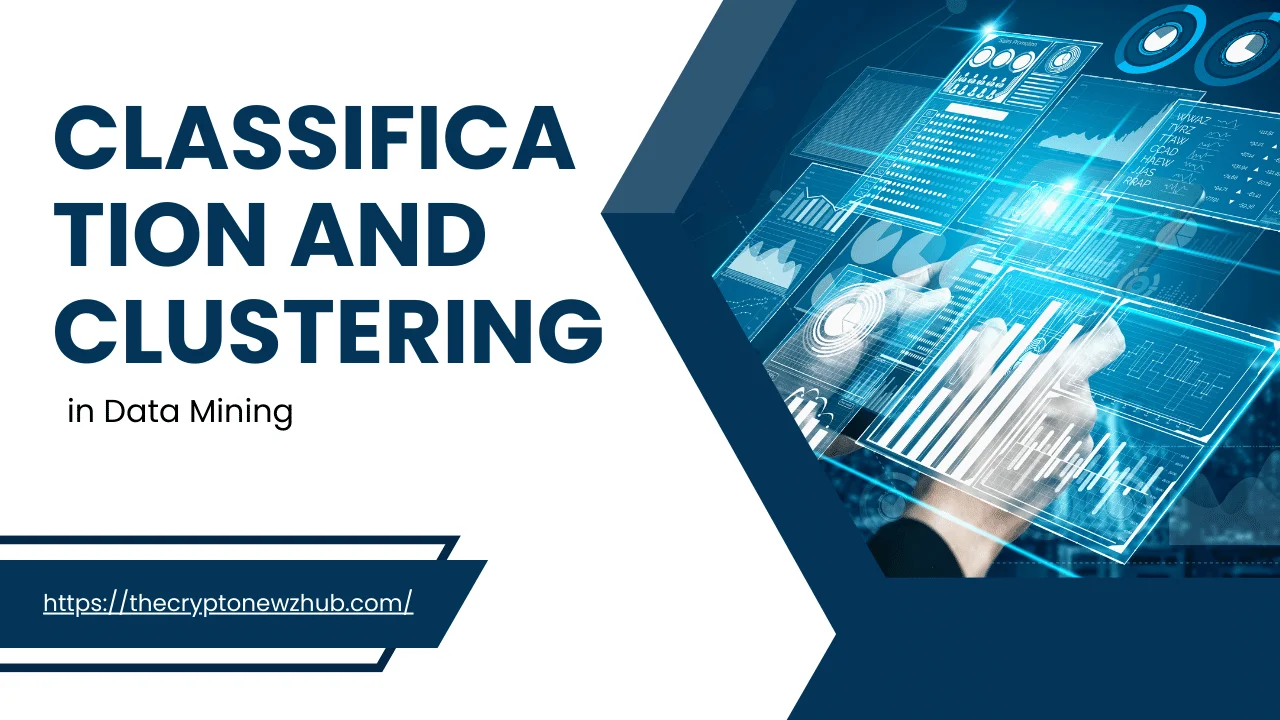Classification and clustering are two crucial methods that are leading the way in the dynamic field of data analytics. These techniques are crucial for mining the daily deluge of data for useful insights. Despite their differences in function, both are essential in improving decision-making in many fields, such as healthcare, marketing, finance, and more. To help readers fully grasp the importance of these techniques in data mining, this essay dives deep into their physics, applications, and subtleties.
Purpose and Audience for the Article
Readers interested in data science and analytics, whether as professionals or as enthusiasts, will find this essay to be comprehensive. Whether you’re an experienced data scientist, a business analyst, or just starting out in the field, you’ll find useful information and advice in this article. Fostering an environment of informed decision-making based on solid analytical techniques, the purpose is to both inform and empower readers by simplifying complicated topics and displaying real-world applications.
Foundational Concepts of Data Mining
Understanding Supervised and Unsupervised Learning
The two main approaches to learning in data mining, supervised and unsupervised, are what set clustering and classification apart from one another. In supervised learning, models are trained on labelled data in order to make predictions about unlabeled data. The completeness and accuracy of the training data greatly affect the performance and accuracy of these models. Unsupervised learning, which is mainly employed in clustering, does not necessitate labeled data. In its place, it helps unearth latent structures or clusters by immediately detecting patterns and relationships in the data.
Role of Algorithms in Data Mining
To put it simply, algorithms are what power data mining operations. Algorithms such as support vector machines, decision trees, and neural networks examine the training data to generate models for categorization. Clustering techniques, such K-means, hierarchical clustering, and DBSCAN, sift through data in search of inherent clusters; the specific properties and applicability of these algorithms vary with the data’s complexity and type.
Pattern Recognition and Feature Selection
It takes more than algorithms to do good data mining; pattern recognition and feature selection skills are also essential. Classification tasks rely heavily on pattern recognition since they aim to detect and forecast labels from input patterns. When it comes to improving the accuracy and efficiency of mining models, feature selection is crucial since it helps to eliminate redundant or irrelevant data.
Data Analysis with Clustering
For the purpose of discovering previously unseen patterns or clusters in data, clustering is a common tool in exploratory data analysis. In cases where the data does not have labels and the connections between the data points are unclear, this method is vital. Clustering aids analysts in making well-informed hypotheses and directing their investigation further by investigating these connections.
Data Mining Techniques for Decision Making
When it comes to making strategic decisions, both clustering and categorization provide strong insights. Businesses can greatly improve their decision-making processes by gaining a better grasp of market segments by clustering or by classifying data to predict trends.
Real-World Applications of Classification and Clustering
Marketing Analytics and Customer Segmentation
As a marketing tool, clustering helps to divide a consumer base into smaller groups, which in turn allows for more targeted marketing campaigns. Classification can also help businesses anticipate their consumers’ actions, such whether they will buy a product or not, so they can engage with them more proactively.
Healthcare
Classification algorithms have widespread application in healthcare, whether for the purpose of disease diagnosis using medical imaging or the prediction of patient outcomes using past data. Clustering can also reveal hidden patterns in patient data, providing valuable insights for healthcare providers and administrators.
Financial Services
To identify suspicious activity and determine a customer’s creditworthiness, classification models play an essential role in the banking industry. Clustering can divide consumers into different groups according to their buying habits or reveal suspicious trends that could point to fraud.
Cybersecurity
Cybersecurity relies heavily on classification and clustering to aid in threat detection and response. Clustering can examine suspicious patterns of network traffic and identify possible security breaches, while classification models can forecast the kinds of cyber assaults.
Supply Chain and Logistics
By seeing trends in logistics and consumer requests, clustering helps supply chain managers optimize routes and stockpiles. To keep operations running smoothly, classification aids in demand forecasting and the identification of possible supply chain interruptions.
Advanced Techniques in Classification and Clustering
Neural Networks in Classification Tasks
When it comes to classification, neural networks are a potent class of models. They excel at handling complicated and big information. They figure out how to learn by emulating the way the human brain works, tweaking its internal settings to reduce the discrepancy between the projected and actual results. Because of their skill, they are great at things like natural language processing, picture recognition, and speech recognition.
Hierarchical and K-means Clustering Methods
Hierarchical clustering is great for situations when it is important to keep the relationships between data points intact since it constructs a tree of clusters without requiring a fixed number of clusters. However, when efficiency is paramount, K-means clustering is the way to go because it divides data into K separate groups using distance measurements. The analytical needs and characteristics of the dataset dictate the method(s) of choice, yet both have their place.
DBSCAN for Complex Data Structures
Finding clusters of any size or form in massive datasets with noise and outliers is where Density-Based Spatial Clustering of Applications with Noise (DBSCAN) really shines. This method is great for complicated data settings because it clusters points that are near together and flags points that are alone in low-density areas as outliers.
Feature Selection in Model Accuracy
When looking to boost the efficiency of classification models, feature selection plays a vital role. Models are made more efficient and less susceptible to overfitting mistakes by eliminating features that are irrelevant or redundant. It is usual practice to employ methods like recursive feature removal, forward selection, and backward elimination to determine which features are most important for a model’s accuracy.
Challenges and Future Directions in Data Mining
Handling High-Dimensional Data
The “curse of dimensionality” makes it harder to use conventional clustering and classification methods with increasingly complicated data. Important distance measures for these methods get watered down in high-dimensional spaces. When dealing with high-dimensional data, it is common practice to use advanced approaches such as dimensionality reduction or deep learning models.
Ensuring Privacy and Security
Protecting personal information is more important than ever before due to the growing prevalence of data mining in delicate sectors. Researchers are looking at methods such as secure multi-party computation and differential privacy to keep data safe while yet allowing for valuable insights to be derived.
Adapting to Evolving Data
Data is dynamic and ever-changing in many real-world contexts. Keeping the insights supplied accurate and relevant requires developing adaptive models that can update themselves as data changes. This is no easy feat, but it is essential.
Integration with Big Data Technologies
Hadoop and Spark, two big data technologies, must be integrated with sophisticated data mining algorithms to keep up with the ever-increasing data volumes. These systems offer a scalable setting for deploying complicated data mining algorithms, and they are capable of efficiently processing massive amounts of data.
FAQs
Q1: What is the main difference between classification and clustering?
A1: Classification is a supervised learning technique aimed at predicting labels for new data based on past data, whereas clustering is an unsupervised technique used to group similar data points without predefined labels.
Q2: Can clustering be used for prediction tasks?
A2: Clustering is typically used for exploratory data analysis and is not suited for direct prediction tasks, unlike classification which is designed for predictions.
Q3: What are some common algorithms used in clustering?
A3: Some popular clustering algorithms include K-means, hierarchical clustering, and DBSCAN, each with its own advantages depending on the application.
Q4: How do neural networks improve classification tasks?
A4: Neural networks can model complex nonlinear relationships and interactions between features, which enhances the accuracy and predictive power of classification models.
Q5: What is feature selection and why is it important?
A5: Feature selection involves identifying the most relevant variables for use in model building. It improves model performance by reducing overfitting and enhancing generalization to new data.
Also Read: IBM Blockchain Essentials: Guide for Developers
Conclusion
Fundamental data mining techniques that allow for the extraction of valuable insights from raw data include classification and clustering. These methods have come a long way, addressed issues like high-dimensional data and continuous data streams, by employing sophisticated algorithms and processes. In order to fully utilize the data’s potential to drive innovation and decision-making across different industries, these methodologies must evolve in response to the ever-increasing volume and complexity of data. Data professionals may make good use of these potent tools to address real-world challenges if they keep up with these innovations and comprehend their uses.

Brandy Stewart, an enchanting wordsmith and seasoned blogger, weaves compelling narratives that transport readers to uncharted territories. Infused with perceptive viewpoints and dynamic storytelling, Doris exhibits a command of language that enthralls both hearts and minds, leaving a lasting mark on the literary panorama.

